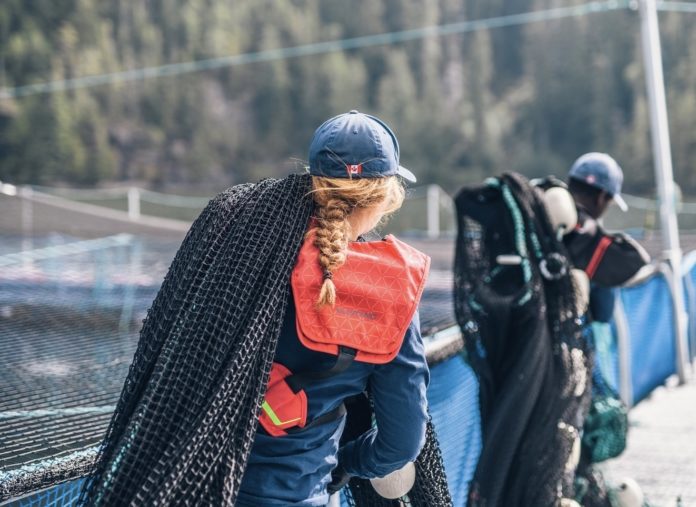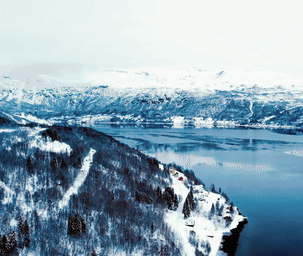Peer-reviewed study challenges narrative on salmon farm pathogen risk.
A new academic review challenges the dominant scientific and political consensus that open-net pen salmon farming poses a long-term threat to wild salmon stocks.
The paper, published in the peer-reviewed journal Aquaculture, Fish and Fisheries, argues that the evidence for harm from farm-origin pathogens is overstated, and in many cases methodologically flawed.
The publication comes at a politically sensitive moment for the Canadian aquaculture sector, just one year after Ottawa committed to removing all marine-based salmon farms from British Columbia’s coastal waters by June 2029. The phase-out was framed in part as a precautionary measure to protect wild salmon populations from disease, parasites, and environmental impacts linked to fish farms.
But the authors — six experienced fish health scientists from UC Davis, Oregon State University, Washington State University, and the Alaska Department of Fish and Game — take aim at that assumption.
“Infectious disease is a normal part of all animal populations,” said corresponding author Gary D. Marty, a research associate at UC Davis School of Veterinary Medicine and senior fish pathology consultant in British Columbia. “Also normal is pathogen transfer among populations that interact, including wild and farmed salmon. Many studies over the past two decades have elevated these natural risks to an existential threat to wild salmon. We critique these interpretations, showing that in British Columbia, we have no good evidence that risks from salmon farm pathogens have resulted in long-term impacts on wild salmon populations.”
Farmed-wild interactions overstated
Titled Pathogens from Salmon Aquaculture in Relation to Conservation of Wild Pacific Salmon in Canada: An Alternative Perspective, the paper reviews over 20 years of data, much of it cited in regulatory or advocacy documents calling for tighter restrictions on aquaculture. In particular, it focuses on how studies have interpreted the risks posed by pathogens such as PRV (Piscine orthoreovirus), Tenacibaculum maritimum, and Piscirickettsia salmonis.
The authors write that they found no strong evidence linking pathogens from salmon farms to long-term declines in wild populations. They argue that many studies used to justify farm removals failed to account for background pathogen presence in wild populations, lacked evidence of disease causation, or employed modelling approaches without adequate biological validation.
One key criticism is the tendency to infer directionality — that is, to assume that any pathogen found in both farmed and wild fish must have originated from farms. The authors emphasise that pathogen transfer among interacting populations is a natural phenomenon observed in all regions where Pacific salmon are found. Focusing only on farm-to-wild transfer, they write, does not in itself demonstrate harm.
Challenging Canadian government assumptions
While the paper does not name policymakers directly, it clearly questions the basis on which the Government of Canada has made its aquaculture decisions in British Columbia.
In June 2024, Fisheries and Oceans Canada announced a five-year plan to phase out open-net pens and transition to land-based or closed-containment systems — a decision welcomed by anti-farming groups, but strongly contested by industry.
In response, British Columbia salmon farmers have pointed to their record of disease management and the absence of direct scientific evidence linking farm-origin pathogens to population-level collapse.
The new review supports that position, arguing that the central question is not whether pathogens exist on farms — which they do — but whether those pathogens are causing population-level impacts on wild stocks. According to the authors, the weight of evidence suggests they are not.
Calls for more balanced risk communication
The paper concludes by urging greater attention to basic principles of disease risk assessment. Exposure, dose, and biological context, the authors write, are often missing from public communication about aquaculture. The result, they argue, is that pathogen-related risks are sometimes presented without reference to the factors that determine whether actual harm occurs.
The authors are Gary D. Marty and Esteban Soto (University of California, Davis); Michael L. Kent (Oregon State University); Thomas B. Waltzek (Washington State University); and Jayde A. Ferguson and Theodore R. Meyers (Alaska Department of Fish and Game).
Their work was not funded by industry and was subject to standard academic peer review.
The full paper, titled Pathogens from Salmon Aquaculture in Relation to Conservation of Wild Pacific Salmon in Canada: An Alternative Perspective, is available open access via Wiley Online Library.
Correction (9 July 2025):
This article previously misstated the list of co-authors and included paraphrased text in quotation marks. These issues have now been corrected. We apologise to the authors for the errors.


